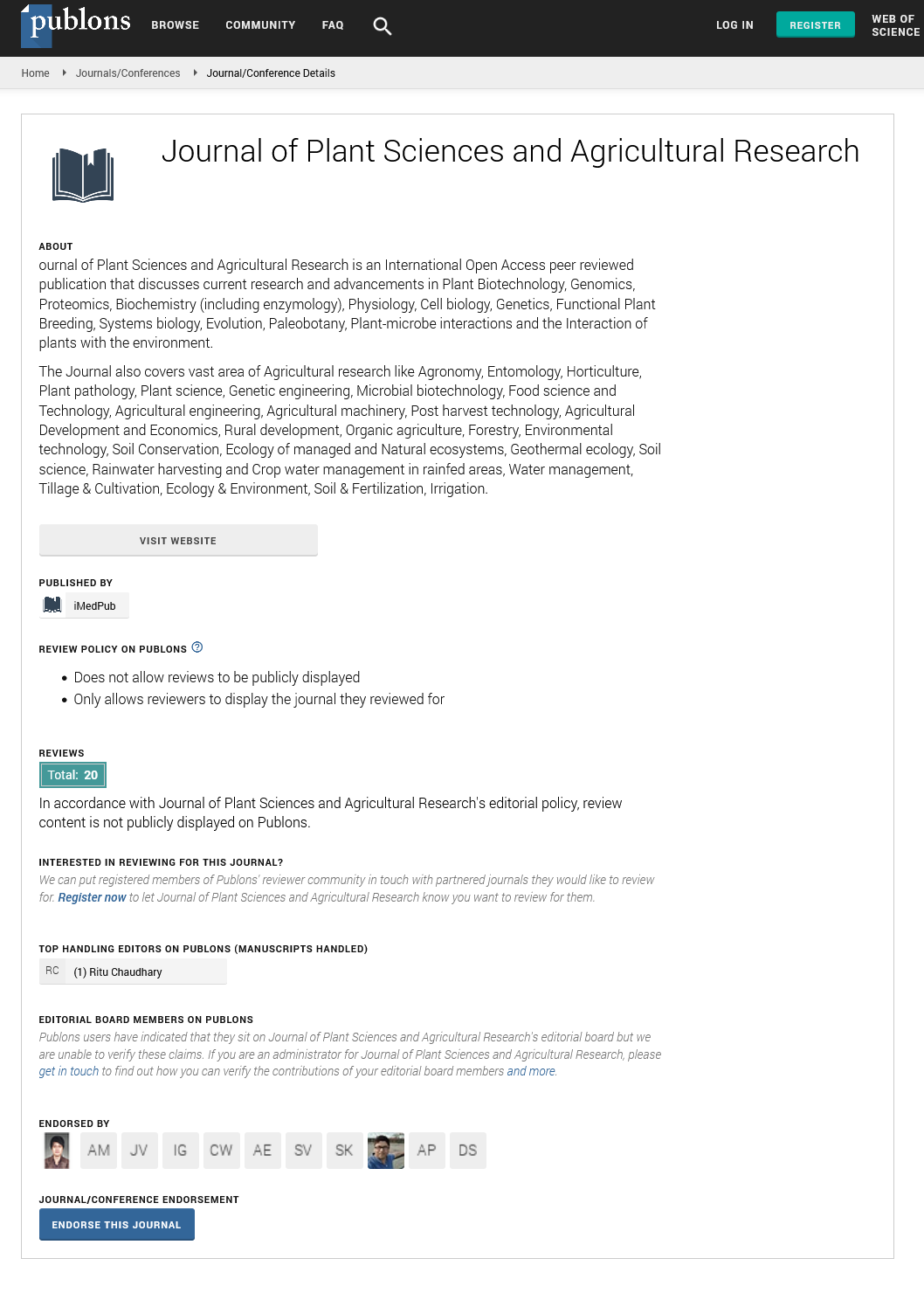Abstract
Determination of Critical Weed Competition Period in Roselle Plant (Hibiscus Sabdariffa L.) in Arba Minch, Southern Ethiopia
High weed infestations are among the greatest constraints to roselle production in the major growing countries worldwide. Realizing the critical period on behalf of weed control can be a means for an effective weed control strategy, which helps to reduce the raid of weeds and increase the benefits obtained from roselle production. The field experiment was conducted during the 2017 cropping year to determine (i) The critical periods of cropweed competitions in roselle production and (ii) The effects of weed competition periods on growth and yield performances of roselle. The experiment consisted of 14 treatments in two series, including Increasing Duration of Weedy Periods (IDWP) and Increasing Duration of Weed-Free Periods (IDWFP), which were compared with a Weedy Check (WC) and Weed-Free Check (WFC). The treatments were arranged in randomized complete block design with three replications. Weeds were permitted to vie with the roselle for 15, 30, 45, 60, 75, and 90 Days After Transplanting (DAT) and throughout the growing periods along with a WFC. The results obtained from this study exhibited that a total of 69 weed species competed with roselle, the weeds abundantly belonged to Poaceae and Asteraceae families. In IDWP, weed density and dry biomass were increased, whereas crop parameters were decreased. The reverse was true in IDWFP both for weed and crop parameters considered. The highest fresh and dried calyx yields were obtained from WFC, and followed by 90 DAT in IDWFP, while the lowest was gathered from WC and followed by 75 DAT and 90 DAT in IDWP. The high weed interference significantly reduced fresh and dried calyx yield by 68.69% and 65.93% as compared to the yield received from the WFC, respectively. To determine the beginning and the end of the critical period of crop-weed competitions 5% and 10% arbitrary yield loss levels were used, which were determined by fitting Gompertz and logistic regression analysis. Overall, to reduce the yield loss by more than 5% and get a higher economic return, weeds must be kept free within 20 DAT to 75 DAT as it has been proved to be the critical period of weed-crop competitions. However, further studies have to be undertaken elsewhere in Ethiopia for at least three consecutive years for developing a concrete recommendation.
Author(s): Getachew Gudero Mengesha, Ano Wariyo Negaso, Negasu Guteta Bayisa and Dizgo Chencha Cheleko
Abstract | Full-Text | PDF
Share This Article
Google Scholar citation report
Citations : 135
Journal of Plant Sciences and Agricultural Research peer review process verified at publons
Abstracted/Indexed in
- Google Scholar
- Publons
- Secret Search Engine Labs
Open Access Journals
- Aquaculture & Veterinary Science
- Chemistry & Chemical Sciences
- Clinical Sciences
- Engineering
- General Science
- Genetics & Molecular Biology
- Health Care & Nursing
- Immunology & Microbiology
- Materials Science
- Mathematics & Physics
- Medical Sciences
- Neurology & Psychiatry
- Oncology & Cancer Science
- Pharmaceutical Sciences
